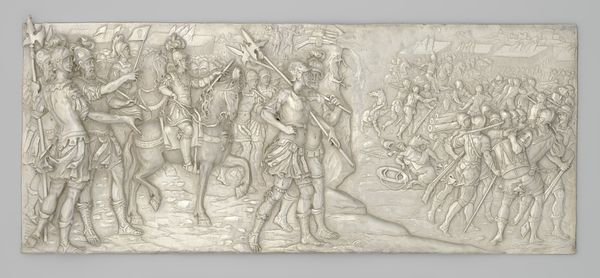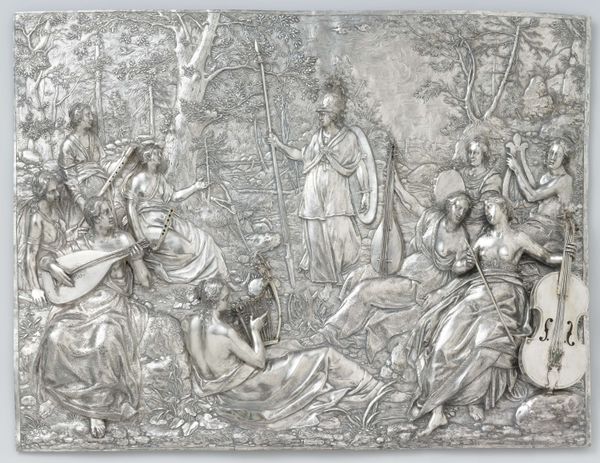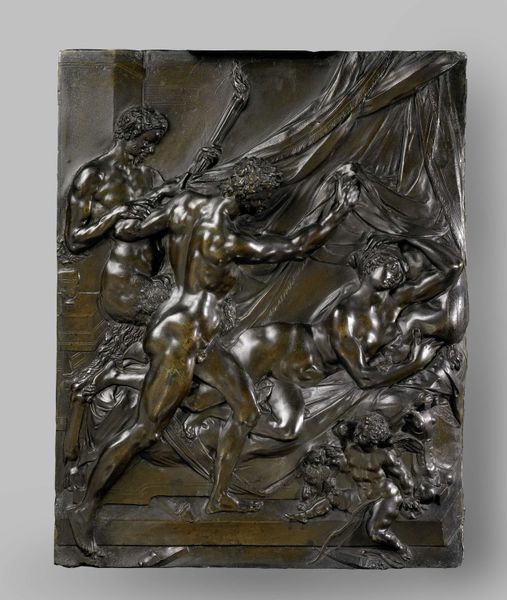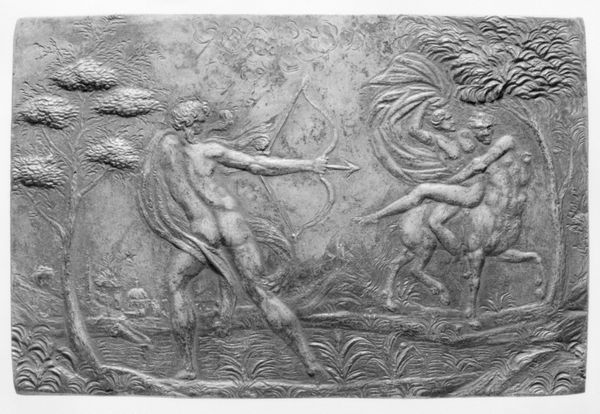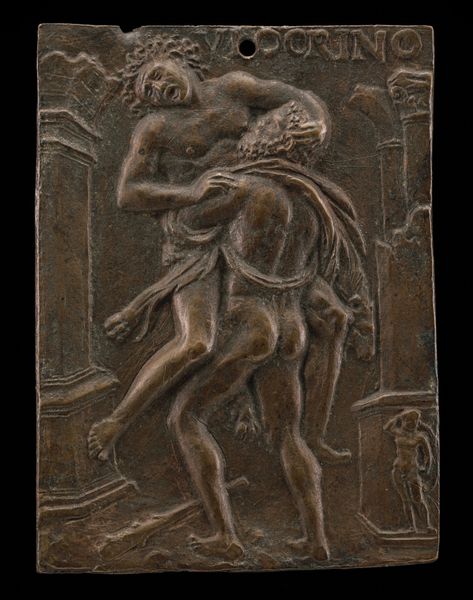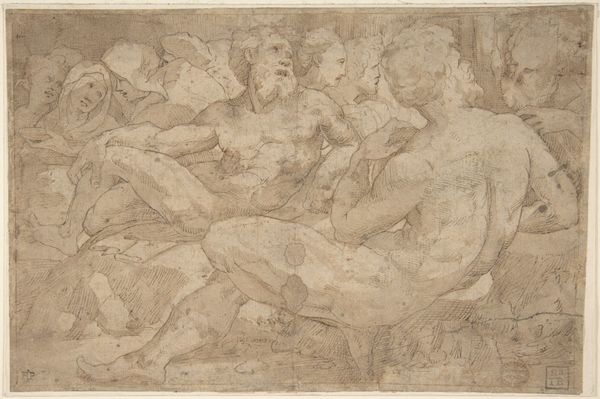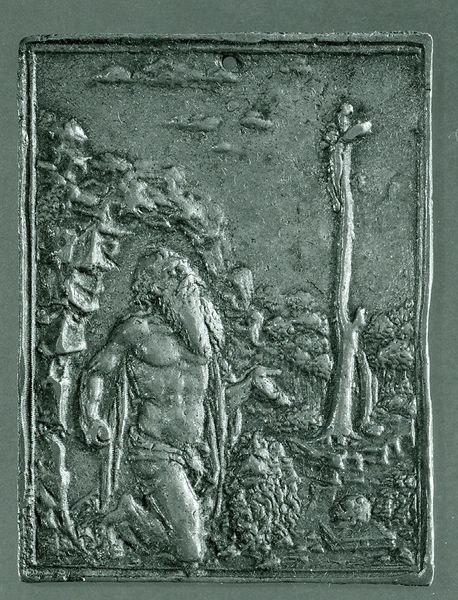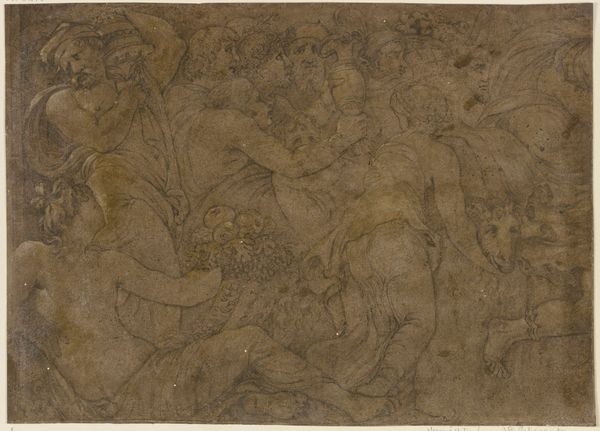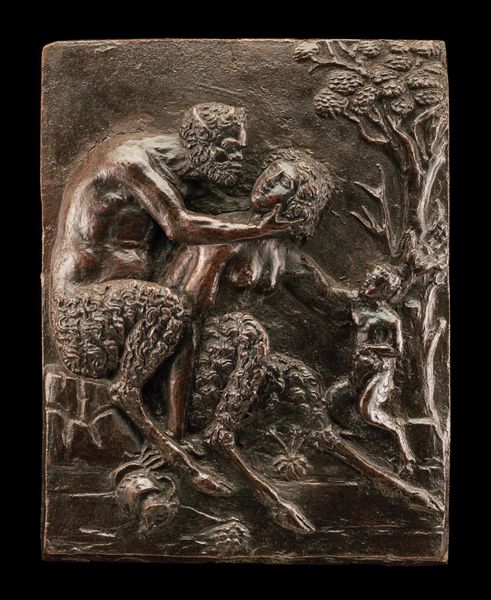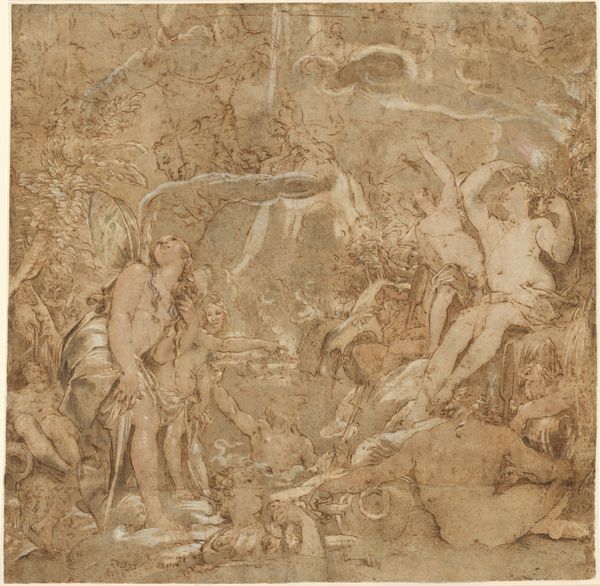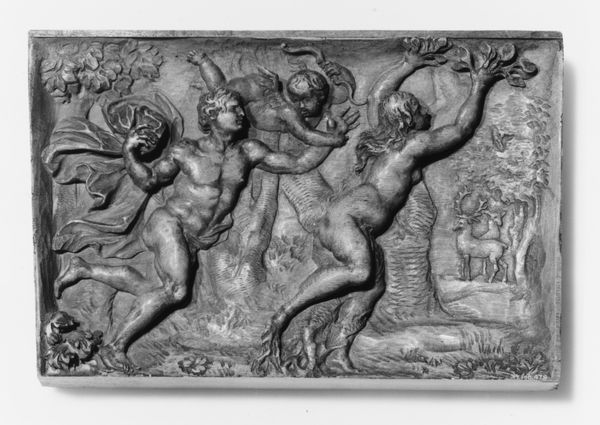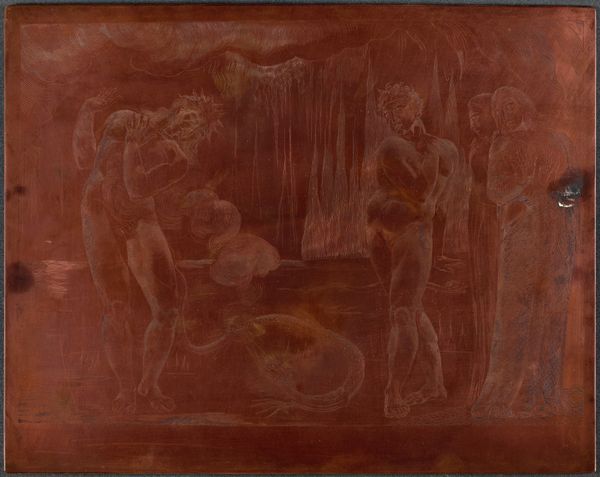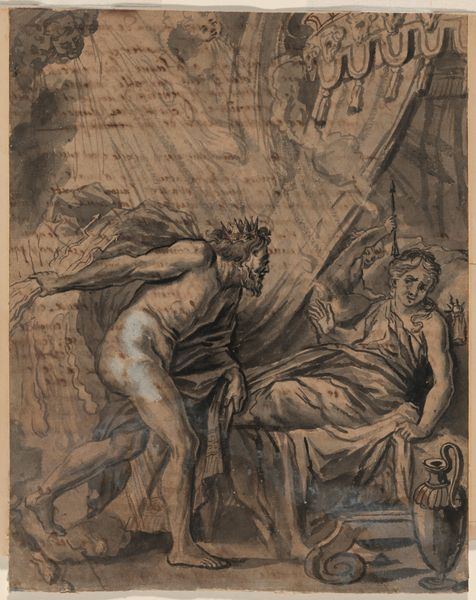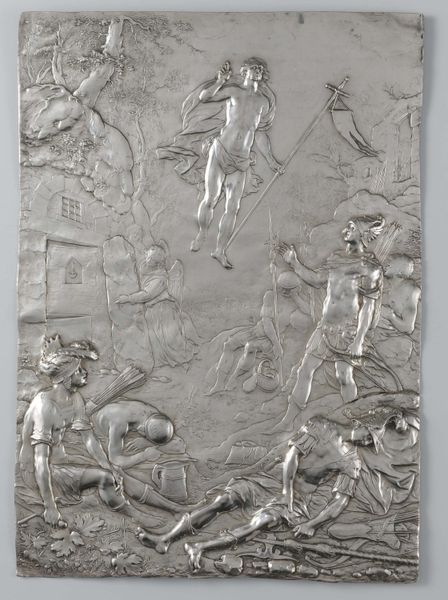
carving, metal, relief, sculpture
#
carving
#
baroque
#
metal
#
sculpture
#
relief
#
white palette
#
figuration
#
sculpture
#
carved
#
history-painting
#
mixed media
#
watercolor
Dimensions: height 13.1 cm, width 15.6 cm, thickness 1.0 cm
Copyright: Rijks Museum: Open Domain
Editor: This is "Mercury and the Sleeping Argus" by Paulus Willemsz. van Vianen, made around 1610. It's a baroque relief, made of metal. The monochrome and almost industrial look of the carving feels very contemporary. What strikes you most about the material choices in this work? Curator: The choice of metal, and the meticulous carving, really highlights the labor involved. Van Vianen is elevating metalwork – traditionally considered craft – to the level of high art sculpture. Think about the societal value judgments implicit in that choice during the Baroque period. This wasn't just about depicting a classical myth; it was a statement about the value of different kinds of artistic production. Editor: So, the medium itself challenges those historical categories? Curator: Exactly. The smoothness, the coldness of the metal contrasts sharply with the warmth typically associated with mythological scenes. Consider also who would have commissioned and consumed such a piece. Was this destined for a noble's collection, subtly showcasing not just artistic skill but also the patron’s wealth and understanding of complex artistic concepts? The making of art becomes inseparable from how the work functions socially. Editor: That's fascinating, considering that Argus was lulled to sleep with stories. The cold medium creates an interesting tension then, because stories are meant to be these very lively things. Curator: Precisely! Van Vianen makes you consider what kind of ‘story’ this *is*. What kind of cultural labor it implies. In what way its existence changes traditional myth-telling and sculpture. Editor: I'm starting to see the piece as not just illustrative, but deeply embedded in the economics of art creation at the time. Curator: Yes. By looking at the materiality, production, and the social contexts of consumption, we get a much richer understanding than simply focusing on the mythological subject matter alone. Editor: This perspective has completely shifted my view. It is very powerful! Thanks!
Comments
rijksmuseum about 2 years ago
⋮
This scene revolves around the cow in the background, Jupiter’s beloved Io. Jupiter changed her into a cow to hide his adultery from his jealous spouse, Juno. But since Juno asked for the cow as a present, Jupiter had to concede. Juno had the cow guarded by Argus, whereupon Jupiter sent Mercury to kill Argus. Mercury first lulled Argus to sleep with music and stories.
Join the conversation
Join millions of artists and users on Artera today and experience the ultimate creative platform.
